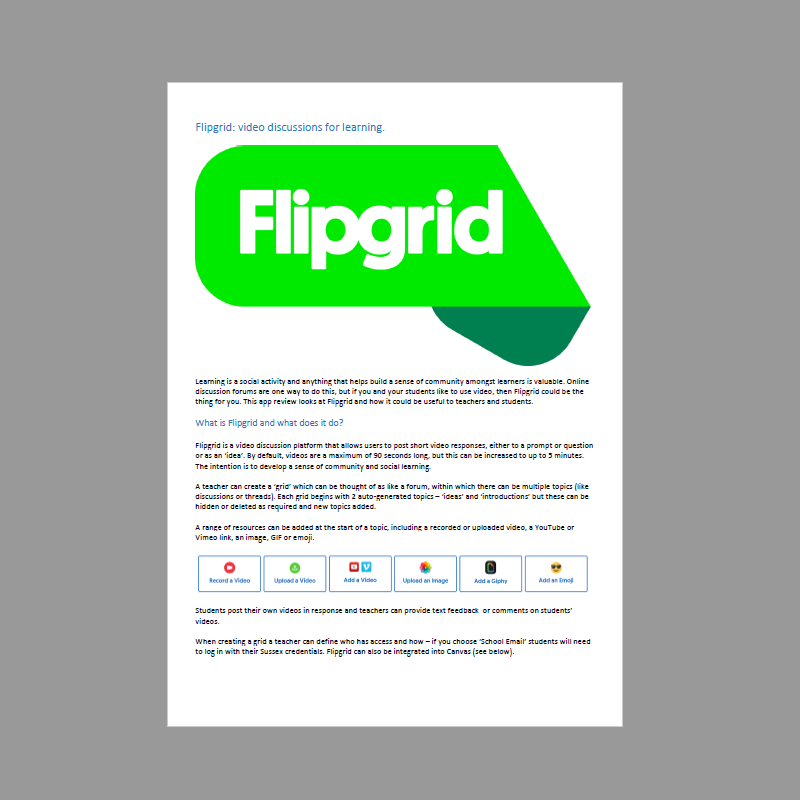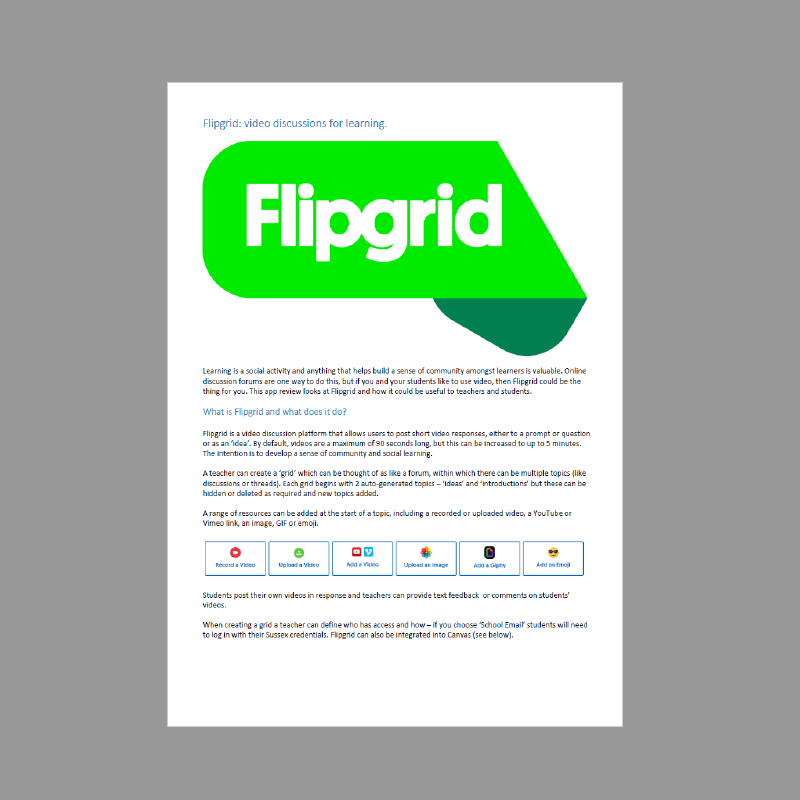
In the past PDF (Portable Document Format) was considered a great format for delivering documents online. By their nature the PDFs can be viewed and look the same on different devices. However, with the increase in viewing content on mobile devices and the welcome new focus on accessibility, PDFs have come to pose a substantial challenge. Virtual Learning Environments (VLEs) like the University of Sussex’s Canvas online study platform, are filled with PDFs which were not created with accessibility in mind and which don’t meet legal standards for accessibility.
There are three key elements on which documents of all formats commonly fail to meet accessibility standards:
- missing or irrelevant text descriptions for images,
- lack of headings and lists for structure,
- poor colour contrast.
There are other issues which we cover in our digital accessibility toolkit but for this post I’ll focus on these three.
These issues are not immediately apparent when looking at a PDF. Take the following two examples. The first is a PDF with text descriptions and headings. The second looks the same but is an image of the former document embedded in a PDF. A visually impaired viewer confronted with the second example would not be able to access the content at all.

1. A PDF with screen readable text and images with alternative text. 
2. A PDF containing an image of a document.
Does it need to be in PDF format?
The first thing to consider is whether your material needs to be presented in this format. There may still be reasons for creating a PDF as the format is more ‘locked down’, which some may see as desirable. However, if you can provide information in a Canvas page it is likely to be more accessible on a larger number of devices and certainly easier to update and change.
Creating accessible PDFs
If you do want to use a PDF, next we’ll look at some ways to do this. One likely route for creating it is from a Word Document or PowerPoint.
Preparing your document
The accessibility of your final PDF will depend on the accessibility of your source document so it is important that before creating a PDF you add correct structure such as heading styles and lists, and make sure that images have alternative text (alt text) before converting to PDF. You can find guidance on adding structure, alt text and using appropriate colours in Microsoft Office documents in our Digital Accessibility Toolkit so I won’t cover that in more detail here.
Once you are happy you have made your source Word or PowerPoint accessible, select File > Check for Issues > Check Accessibility, to run the accessibility checker. This can help to guide you to be sure you haven’t missed anything.
Converting to PDF
Both Word and PowerPoint give you the option to save as PDF (Select File > Save as Adobe PDF). However, with Word don’t save straight away. Select Options and make sure that Convert Word Headings to Bookmarks is checked.
Correcting existing PDFs
Before starting on this topic it is important to remember that placing a PDF of a journal article or section of a book on your module site is likely to be a breach of copyright. Readings should be added to your online reading list. If you are unsure how to do this, please contact the library for further guidance. If you have an existing PDF that you created yourself you can correct it using Adobe Acrobat. This is available free to all University of Sussex staff.
Recognisable Text
In the example above the second PDF was rendered inaccessible because it was an image which had been converted to a PDF. You can easily check if text is recognisable in a PDF by trying to select it by clicking and dragging your cursor over the text. The words should be highlighted. If the text is not recognisable, Acrobat has a useful function.
- Select Tools > Enhance Scans.
- Then, from the menu at the top select Recognize Text > In This File
- Finally select the blue Recognize Text button.
You should now be able to select the text in the document.
Adding Alternative Text to images
Once your file is open in Acrobat, select Tools > Accessibility to view the accessibility options.
Selecting Set Alternate Text then OK highlights the first image in the document and gives you a box to add a text description. It’s worth noting you also have a checkbox to mark the image as decorative. If the image provides no purpose other than aesthetics, check that box and a text description is not required.
Select the forward arrow to move on to the next image and repeat until all images are done, then select Save & Close to finish.
Adding some structure
Next, select Reading Order from the accessibility options. This should number the sections of the document so you can see the order in which they would be read by a screen reader.
You may see now that what you had thought was a heading has been lumped in with other text.
To identify a heading click and drag your cursor to draw a box around the heading text. The text should show a purple border.
Next, select the relevant heading level from the Reading order panel.The main heading for the document should be Heading 1. Headings need to be nested, so Heading 2 is used for sub-headings, then heading 3 for subsections under Heading 2.
It can get more complicated
I’ve tried to keep things simple here but many of you will have documents which are far more complicated than this with maths, tables and complicated reading orders. If you are unable to make your documents accessible please do consider what other ways you can make this information available to students, for example as Pages in Canvas. Do visit our Digital Accessibility Toolkit to get more information on making your materials accessible.
If you have any questions or require further guidance, please get in touch with tel@sussex.ac.uk.


